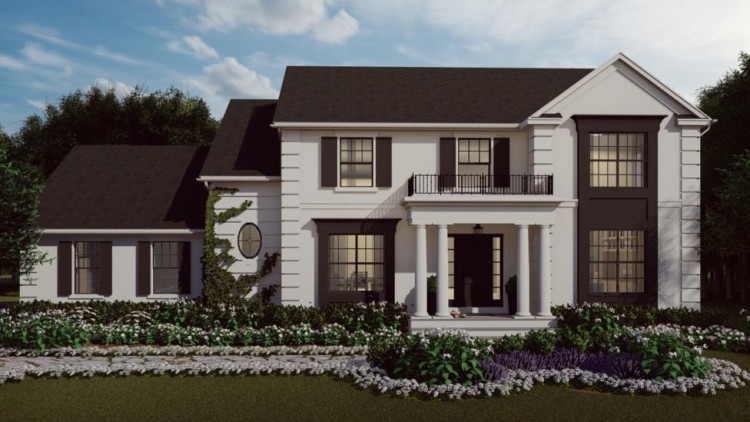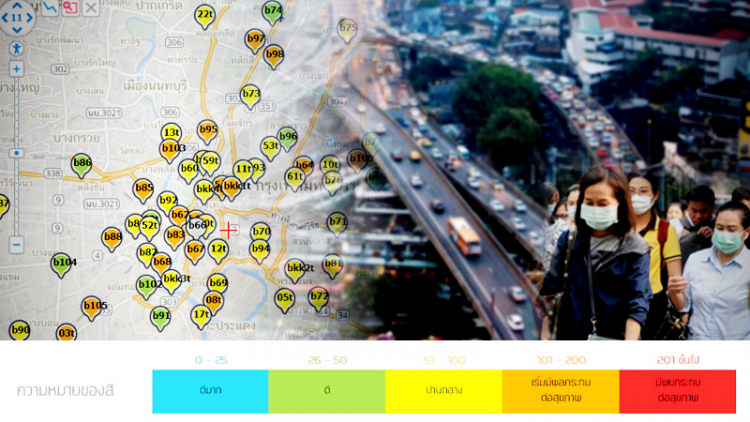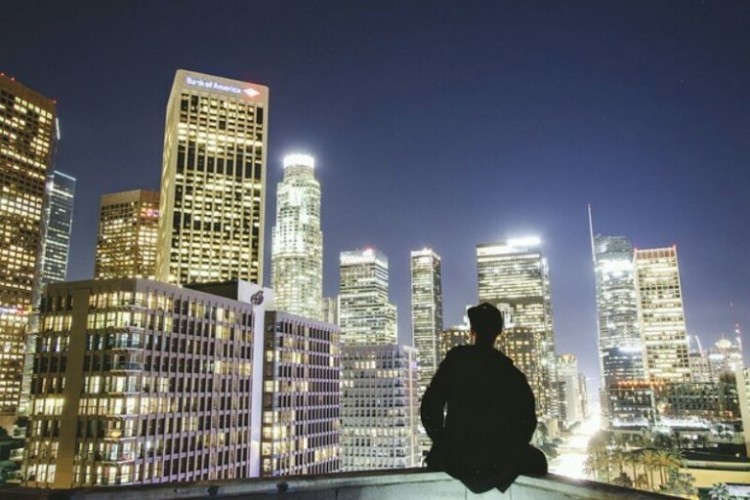I am walking around the wooden frame of a five bedroom, five-and-a-half bathroom house that’s being raised in a secluded New Jersey township near New York City. Surrounding the site are bundles of nails, stacks of wood, and ladders for the construction crew. But the builders aren’t the only ones constructing this 4400-sq-ft (409-sq-m) house: more than two million people around the world can have their say on how it will look, feel and function.
It’s being built by Kate Rumson, an Instagram influencer who runs the account The Houses of Instagram, a curated collection of photos of beautiful homes and interior design. When the 35-year-old decided to build a new house last year, she decided to ask her fans to help – letting them decide things like the type of roof shingles, all the way to major structural designs. She describes the project as “a crowdsourced home created by two million people” that she hopes to complete within 18 months.
In Instagram posts, she asks her fans to vote on different options (for example, whether the kitchen sink should be in an island or under the window). Whichever gets the most votes, Rumson will use. For the past year-and-a-half, she has posted about each step of the build on her personal Instagram page, from planning to excavating.
“It will play out on Instagram,” Rumson says. “From start to finish.”
The followers have already made major decisions for her, like deciding the property should have a three-car garage instead of a two-car garage, which led to a redesign of the entire house. Granted, with each vote, it’s a choice between a few things she’ll like no matter what – her followers can’t sabotage the home with shag carpeting or leopard-print loveseats, for example.
It’s the larger-scale extension of a similar project Rumson completed last year, when she renovated her townhouse, also in New Jersey, enabling her followers to choose details including lighting fixtures, the kitchen backsplash and furniture. She’d let people vote and then post pictures of the winning choice, and says her fans went crazy for it.
Influencers depend on not just their number of followers, but also how engaged and active they are, which is what piques the interest of brands. What better way to engage followers than asking them to help you navigate a major life milestone like building a home?
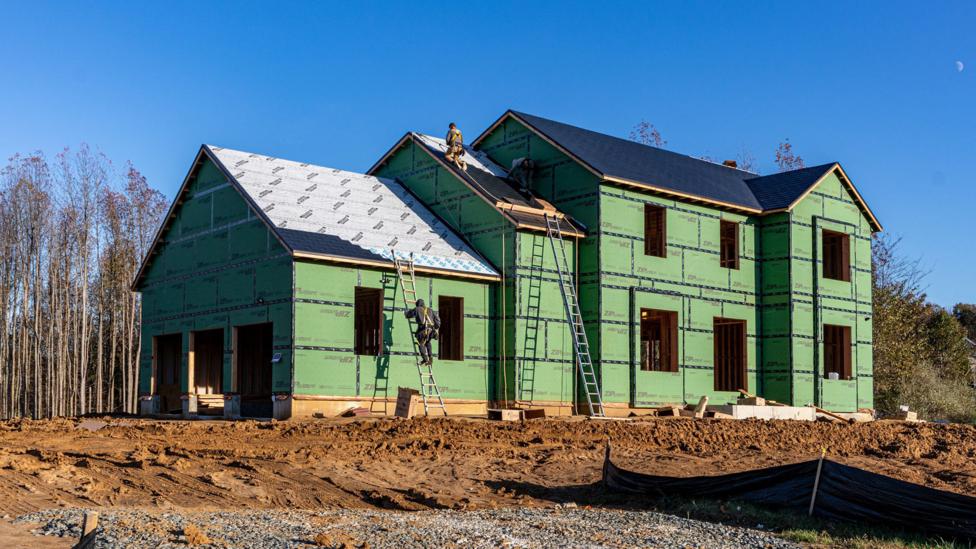
Two million cooks in the kitchen
As an influencer, Rumson earns money by working long-term with brands who want to reach her significant audience, through projects like product design or hosting events.
Most of her funds come from brand ambassadorships with home décor and improvement companies, who are looking for big reach but looking for something cheaper than magazine or TV adverts, which is common with influencers.
For this project, Rumson is partnering with a long list of major brands who will supply flooring, cabinets, appliances and more. She might, for example, ask for votes between two rugs from the same rug company, or a choice of doors from Masonite. Rumson says around 25% of the materials for the new home come from brands she partners with.
Rumson says she isn’t making money from this project specifically – she was planning on building a new home anyway, and her business extends well beyond Instagram posts to things like product design, photoshoot styling, and hosting new product launches. Because her contracts are long-term, some of the services will be tied to the house but not all of them, she says.
Instead, Rumson hopes to create a step-by-step guide to building a house that will work as a resource for anyone wanting to build a home. Her Instagram feeds show high-production, time-lapse drone footage of land being cleared, construction crews laying foundations, as Rumson’s voice narrates: “In this video, I’ll share how we built our poured-concrete basement foundation.”
There’s hunger for this kind of thing on social media – it’s “an intense content journey,” says Mae Karwowski, CEO of Obviously, a social media agency in New York. Buying and building a home brings a “learning curve, headaches, and costs are too much. So we go for the next best thing – watch others do it on Instagram.”
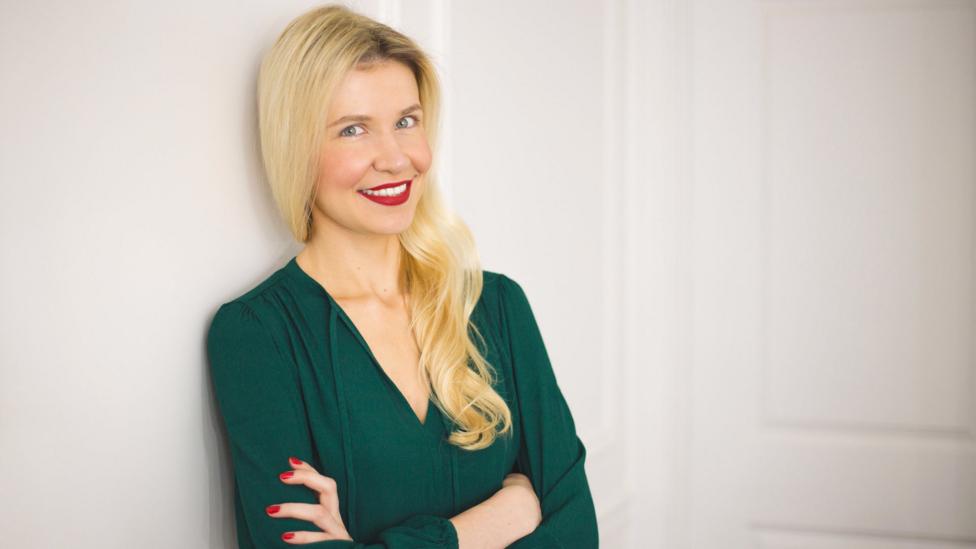
Kate Rumson is the creator of The Real Houses of Instagram - now she's asking her 2+ million followers to help build her own house (Credit: Kate Rumson)
Yuval Ben-Itzhak, CEO of SocialBakers, a Prague-based social media marketing company, says “home influencers” get high engagement on the highly visual platform of Instagram, which is also attributed to “a combination of relevance – most of us have a home – and the real-time inspiration it provides.”
Some estimates put the US home décor market to be worth $660 billion by next year. And this kind of content has been popular long before Instagram. The US home and garden television network HGTV, with its house-hunting and home-building programmes, is wildly popular, as are reality shows like The Apartment, a phenomenon in Asia in which contestants compete to decorate a luxury flat and has just been released on Netflix.
But despite the templatised success of many of these shows, Rumson actually hopes the more straightforward, educational nature of her Instagram project will be an antidote to the manufactured drama of reality TV. Once the house is complete, she wants it to function as a living resource for all future homeowners – not something that’s just “shaky Instagram Stories, but professional videos,” for every step from plotting a site to framing to decorating.
“I want it to be something that people reference for many years to come: ‘How did Kate do this foundation? I remember her saying something – let me go back and re-watch it.’”
Design tendencies
Rumson came to Instagram fame on a windy path: she spent a decade in finance, and also did construction and renovation at night and on weekends for private clients. She didn’t like her day job of as an advisor at an investment banking company. But she loved every aspect of her side gig, from designing a home, building it, decorating it and everything in between.
In 2013 she made a habit of taking screenshots on her phone of design inspiration she’d find around the internet. She says at that time, the only social media account she had was Facebook, and that she didn’t use Pinterest. Eventually, she ran out of space on her phone with all those pics, so she opened an Instagram account to store the extras. On a whim, she started posting them on an anonymous Instagram account: The Real Houses of Instagram, a riff on the popular American reality franchise, The Real Housewives. She suddenly found herself amassing tens of thousands of followers because she was one of the first to post popular home-décor content.
Before long, household brands were reaching out to try and partner with Rumson for business opportunities. Companies messaged her asking for contact info and where she was based, but she was still anonymous, because she was more interested in being a behind-the-scenes curator of eye-catching images.
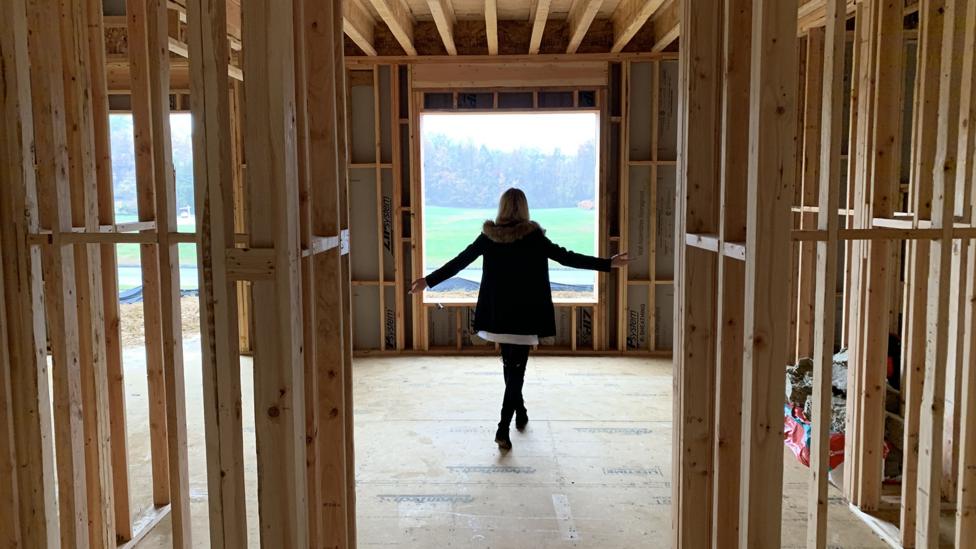
When she finally hit 700,000 followers and started working with a sponsor, she revealed her identity, which she said was “the most nerve-wracking moment of my life.” She decided to quit her full-time career in finance – her mum cried when Rumson told her, she says. But “once I learned brands paid to advertise and market [with influencers], I realised there is a future here,” says Rumson, who sought to structure her own business model after the conventional magazine advert format: working with brands long term to reach big audiences, not just sell one-off sponsored Instagram posts like many influencers do. “I’m learning there are people making millions of dollars. My mind [was] blown.”
The idea to involve her followers for a real-life build came a few years ago when she was still decorating for private clients. In one house, Rumson was torn between two wallpapers for their powder room. So she whipped out a quick post on Instagram and asked her fans to pick for her. “My client got this universally appealing powder room, my followers got to participate, I got this feedback – I thought it was so cool,” she says.
SocialBakers’ Ben-Itzhak says it’s a smart move: “Polls encourage interaction and people are keen to take part because they are curious about the result and how their opinion fares against others.” And for influencers, user engagement is what builds active communities, which are what brands covet.
Credit : BBC.Com
